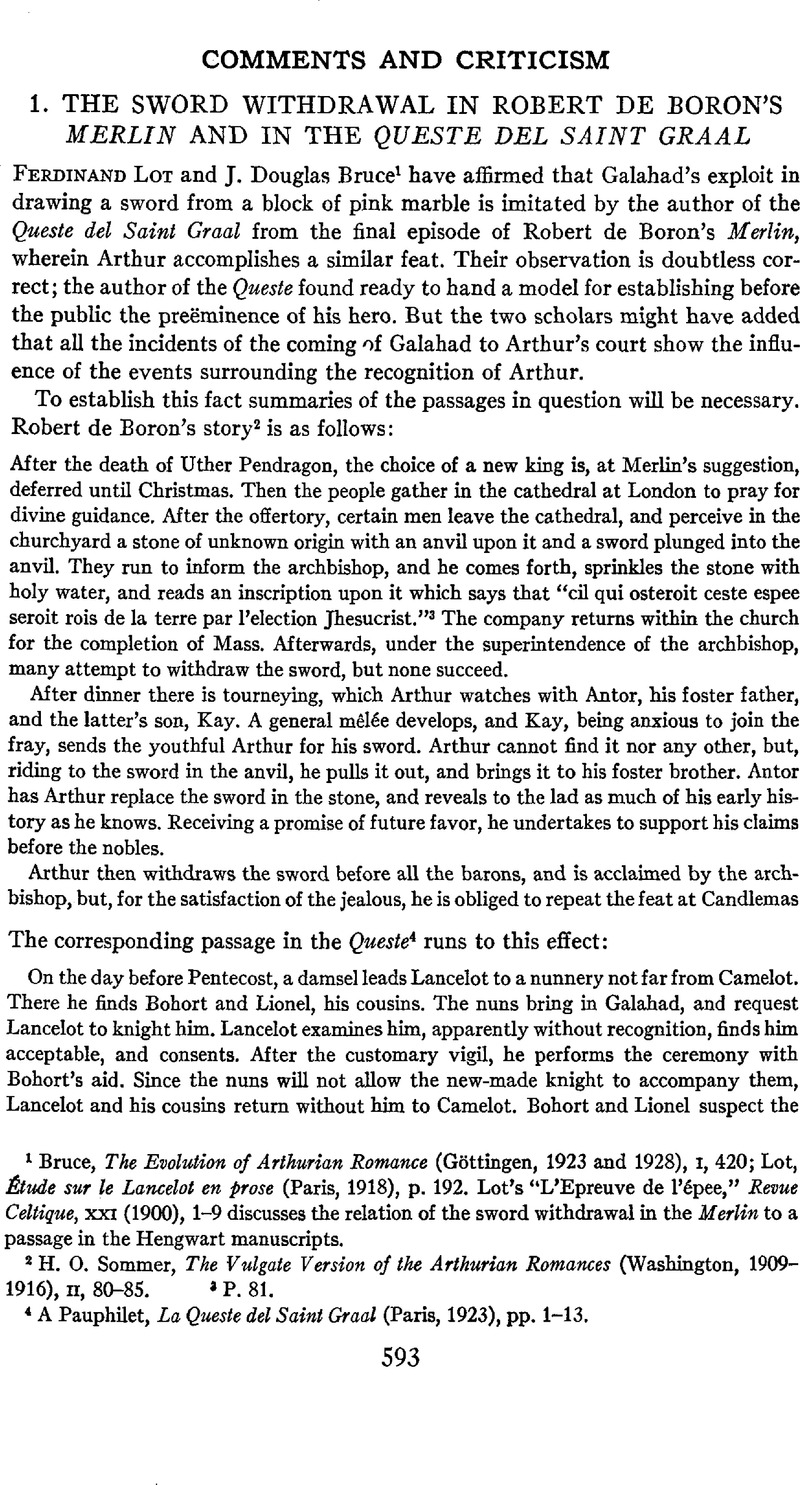No CrossRef data available.
Article contents
The Sword Withdrawal in Robert de Boron's Merlin and in the Queste del Saint Graal
Published online by Cambridge University Press: 02 December 2020
Abstract

- Type
- Comments and Criticism
- Information
- Copyright
- Copyright © Modern Language Association of America, 1938
References
1 Bruce, The Evolution of Arthurian Romance (Göttingen, 1923 and 1928), i, 420; Lot, Étude sur le Lancelot en prose (Paris, 1918), p. 192. Lot's “L'Epreuve de l'épee,” Revue Celtique, xxi (1900), 1–9 discusses the relation of the sword withdrawal in the Merlin to a passage in the Hengwart manuscripts.
2 H. O. Sommer, The Vulgate Version of the Arthurian Romances (Washington, 1909–1916), ii, 80–85.
3 P. 81.
4 A Pauphilet, La Queste del Saint Graal (Paris, 1923), pp. 1–13.
5 Queste, pp. 12–13.
6 This damsel announces herself as the messenger of Nascien the hermit. Nascien seems to be identical with the old man who brings Galahad to court. Both have apparently been suggested by Merlin.
7 Lancelot does not know Galahad's origin until a hermit explains it to him after his conversion, p. 137.
8 P. 84.
9 When Nascien's messenger acclaims Galahad's victory, it is not by lauding the Good Knight, but by decrying Lancelot, the foremost representative of the old order.


